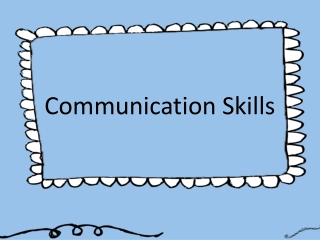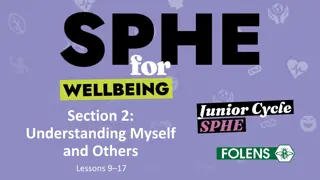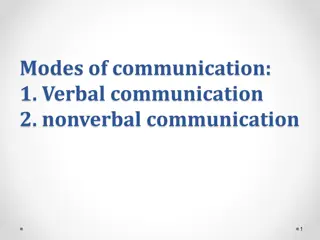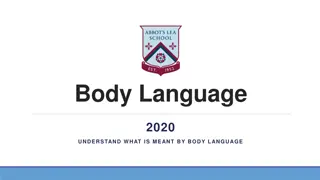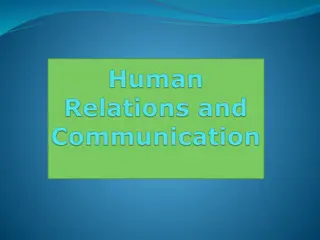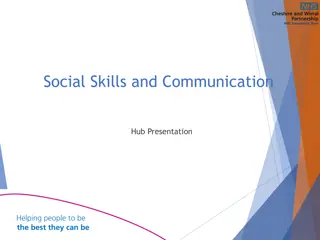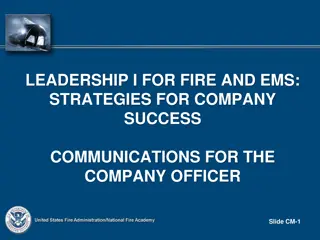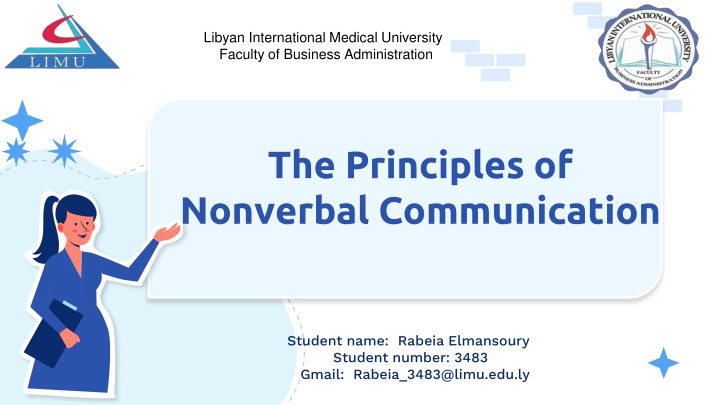
Principles of Nonverbal Communication: Essential Insights for Effective Communication
Explore the fundamental principles of nonverbal communication at the Libyan International Medical University Faculty of Business Administration. Learn how nonverbal messages help form relationships, structure conversations, manage impressions, interact with verbal messages, and express emotions. Enhance your understanding of communication without words and its significance in creating meaningful connections.
Download Presentation

Please find below an Image/Link to download the presentation.
The content on the website is provided AS IS for your information and personal use only. It may not be sold, licensed, or shared on other websites without obtaining consent from the author. If you encounter any issues during the download, it is possible that the publisher has removed the file from their server.
You are allowed to download the files provided on this website for personal or commercial use, subject to the condition that they are used lawfully. All files are the property of their respective owners.
The content on the website is provided AS IS for your information and personal use only. It may not be sold, licensed, or shared on other websites without obtaining consent from the author.
E N D
Presentation Transcript
Libyan International Medical University Faculty of Business Administration The Principles of Nonverbal Communication Student name: Rabeia Elmansoury Student number: 3483 Gmail: Rabeia_3483@limu.edu.ly
CONTENTS: 6 .Nonverbal Messages Help Form Relationships. 1. Intended Learning Outcomes. 7.Nonverbal Messages Structure Conversation. 2. Introduction. 8.Nonverbal Messages Are Crucial for Expressing 3. The Principles of Nonverbal Communication: Emotions. 4. Nonverbal Messages Interact with Verbal Messages. 9.Conclusion. 5. Nonverbal Messages Help Manage Impressions . 10.References. 2
Intended Learning Outcomes 2- List the principles of communication 3- Differentiate between the principles nonverbal communication 1- Define nonverbal communication nonverbal of 3
Introduction Communication without words is referred to as nonverbal communication. When you move your chair closer to someone, smile or stare, point at things, expand your eyes, touch someone, or even just raise your voice volume, you are communicating nonverbally. When you remain silent. Being able to communicate and receive messages through nonverbal means is crucial for effective communication. 4
The 5 Principles of Nonverbal Communication 5
1-Nonverbal Messages Interact with Verbal Messages . 1- Accent 2- Complement 3- Contradict A part of the verbal message is frequently highlighted through nonverbal communication. used to offer nuances of meaning that your vocal communication does not convey. intentionally convey contradictory nonverbal cues to your spoken remarks, 5- Repeat 6- Substitute 4- Control The flow of spoken messages can be managed using nonverbal cues. The vocal Nonverbal communication can also be used to convey information. communication might be restated or repeated nonverbally. 6
2- Nonverbal Messages Help Manage Impressions You establish opinions about people primarily based on their nonverbal communication. You build impressions and make judgments about a person's identity and character based on how they dress, as well as how they smile, keep eye contact, and express themselves facially. and concurrently with how you judge other people. 7
3- Nonverbal Messages Help Form Relationships Your nonverbal. affection, at least in part, nonverbally (Floyd & Mikkelson, 2005). In addition, you use nonverbal cues to express your irritation, rage, and hostility. You can also tell someone about the type of relationship you have nonverbal cues. communication You in relationships love, is often and express support, with them by using 8
4- Nonverbal Messages Structure Conversation Conversation Structured by Nonverbal Cues You offer and receive cues or signs throughout conversation when you're ready to talk, listen, or comment on what was just stated by the other person. These cues control and organize the conversation. 9 9
5-Nonverbal Messages Are Crucial for Expressing Emotions Regardless of the fact that people frequently explain and express their emotions nonverbal cues can convey a significant amount of your emotional experience. For instance, your facial expressions significantly convey your level of enjoyment or unhappiness. eye movements and gestures. People frequently use nonverbal cues to convey uncomfortable sentiments that they would find difficult to express verbally. vocally, 10
Conclusion Being messages through nonverbal means is crucial for effective communication. And understanding the principles of nonverbal communication could help you in communication in your friends family. able to communicate and receive having relationships a better with 11
RESOURCES Joseph A. DeVito (2016). The interpersonal communication book 14thedition 12
Thank you Any questions? 11

